- Home
- William Shakespeare
King John & Henry VIII Page 32
King John & Henry VIII Read online
Page 32
Despite his innovative interpretation, Irving continued the tradition of giving most of the first three acts, but only those parts of the final two that added to the spectacle. Herbert Beerbohm Tree at His Majesty’s Theatre was similarly cavalier in his handling of the text, justifying his decision in an essay of 1920: “Henry VIII is largely a pageant play. As such it was conceived and written; as such did we endeavour to present it to the public.” For this reason, “It was thought desirable to omit almost in their entirety those portions of the play which deal with the Reformation, being as they are practically devoid of dramatic interest and calculated, as they are, to weary an audience.”79 Tree argues this practice was vindicated by the Prologue’s reference to “two short hours.” Nevertheless reviews make it clear that the drastic cutting of the text did not have the desired effect of speeding the production up:
Much cut, for Tree removed the whole of the last act and ended at Anne Boleyn’s coronation, the play nevertheless occupied four hours: the stage staff of His Majesty’s, trained though it was, had to toil frantically to construct Wolsey’s ostentatious palace, the hall in Blackfriars where Katherine was tried, and Westminster Abbey itself.80
Despite this, Tree’s production enjoyed tremendous success, running for a record-breaking 254 performances until 8 April 1911 and earning him this plaudit from Sporting Life: “He has achieved that which a few years ago was considered impossible—he has made Shakespeare popular.”81 A twenty-five-minute silent film of this production was made, but all copies were sadly destroyed after six weeks of special cinematic exhibition.
Early-twentieth-century productions continued the tradition of spectacular stagings. Ben Greet’s for the tercentenary celebrations of Shakespeare’s death at the Stratford Memorial Theatre and the Old Vic was revived two years later in London with Russell Thorndike as Wolsey and Sybil Thorndike as Katherine. Tree had cut the last act completely, moving straight from Katherine’s death to Anne’s coronation. Such practices were rendered less justified by changing critical perceptions; the work of the eminent scholar E. K. Chambers exposed the subjective nature of the verse tests applied by the “disintegrators” (scholars who held that many of Shakespeare’s plays were not written by him but revisions of, or collaborations with, other writers), which argued that Shakespeare was responsible for most of Henry VIII. Robert Atkins’s 1924 production at the Old Vic, despite staging the complete text, took less time than Tree’s four-hour marathon. Atkins was influenced by the ideas of William Poel and the Elizabethan Stage Society who attempted to recreate Elizabethan staging practices. Use of the complete text rekindled interest in the role of Henry, evidenced in Tyrone Guthrie’s casting of Charles Laughton in the part in his 1933 production at Sadler’s Wells, with Flora Robson as Katherine.
7. 1910, Herbert Beerbohm Tree production. “[T]he stage staff … had to toil frantically to construct Wolsey’s ostentatious palace, the hall in Blackfriars where Katherine was tried, and Westminster Abbey itself.”
The play has never enjoyed great popularity in America; it was first performed in 1799 at New York’s Old Park Theater. There was a production at the same theater in 1811 with George Frederick Cooke as Henry, and another in 1834 with Charles Kemble as Wolsey and his daughter Fanny, then twenty-three, as Katherine. Four years later a production was staged at the National Theater, Church Street, New York, and another in 1847 at the old Bowery Theater with Eliza Marian Trewar as Queen Katherine. Many of the best-known British productions including Kean’s, Macready’s, and Irving’s were also seen briefly in America. The notable American actress Charlotte Cushman, whose “Queen Katherine was the consummate image of sovereignty and noble womanhood, austere and yet sweetly patient,”82 also played the part of Wolsey in 1857. Edwin Booth played Wolsey in 1876 in a four-act version at the Arch Street Theater, Philadelphia, and revived it for Booth’s Theater, New York, in 1878.
Despite its relative lack of success in America, in 1946 Margaret Webster inaugurated the American Repertory Theater’s first season at the International Theater with Henry VIII, in her attempt to create “an American Old Vic.”83 Webster’s direction received praise as did David Ffolkes’ designs, but the production overall was not a success: “The fact that a play not seen in New York in this century was used as an opening guy seemed most hopeful. Indeed the production itself was a fine one.”84 Webster reduced the play’s five acts and sixteen scenes to two acts and thirteen scenes.85 The result was “a vivid and smooth-running production full of colour and pageantry,”86 but although it played in repertory throughout the winter, at the end of the season the American Repertory Theater was forced to close. Theater historian and critic Linda McJ. Micheli argues that “Webster’s Henry VIII stands somewhere between nineteenth-century ‘scenic Shakespeare’ and the ‘Elizabethan Shakespeare’ championed by William Poel and others in regional and academic theaters since the early 1900s.”87
Micheli suggests the production is
illuminated by comparison with Tree’s 1910 production, a spectacular culmination of the scenic tradition, and Tyrone Guthrie’s Stratford production of 1949, which introduced mainstream audiences to many of the “new ideas” we now take for granted—a thrust stage, an emphasis on continuity and brisk pace, a respect for the full text, a de-emphasizing of spectacle and solemnity.88
Webster’s production, she concludes, was “[o]n balance … closer to Tree’s than to Guthrie’s.”89
Guthrie’s 1949 Stratford revival is generally regarded as the most significant of the twentieth century, which managed to unify the play by inspired design and directorial decisions. Tanya Moiseiwitsch’s set contrived an “excellent compromise between a platform and a picture frame stage … with its varied levels, its ample forestage, fifteen feet deep, and its well-thought-out modifications and rearrangements of the gallery and the inner-stage.”90 Reviewers all comment on the “fluidity of movement and the power and the pace thus given to the action”:91
the fluid staging which juxtaposed a scene of downfall with one of spectacular rise. The music of the masque … is still in our ears when the muffled drums usher in … the somber procession of Buckingham on his way to execution. Later, as the fallen Wolsey goes off down the center stairs leading into the orchestra pit, the excitement about Anne’s coronation begins on the main stage.92
Both Prologue and Epilogue were spoken by the Old Lady (Anne Bullen’s friend): a device that divided critics. Guthrie stressed the central role of Henry: “Admirably played by Anthony Quayle … Henry dominated the scenes, huge, hot-tempered but human, a mixture of strong-willed sovereign and pouting schoolboy, a pleasure-loving king but a conscientious one, with true Tudor warmth and directness.”93 For Muriel St. Clare Byrne, Diana Wynyard’s Katherine “made one feel as if it were being spoken for the first time” while the “test” of Harry Andrews’s conception of Wolsey was “that the nearer he came to the audience the better I liked his performance.” His Wolsey she thought “just as good as the author meant him to be.”94 Even one of the few critical reviews admits that “Mr. Guthrie made Henry VIII a good show” while lamenting “but that is about all he did do; the nuances of character and the play’s general conception seemed to have escaped him.”95 Such a negative assessment was very much in the minority though and the play was revived with a new cast at the Old Vic in 1953 to celebrate the coronation of Queen Elizabeth II.
Guthrie was again lauded as “our most flamboyant producer” of a “dazzling production” that
made full use of the topical humours of the text. The three onlookers at the Coronation of Anne Boleyn, munching Tudor sandwiches and spotting the Earl Marshall, had a contemporary ring, and at the christening of the Princess Elizabeth which ends this play few can have failed to be moved by the sense of occasion.96
Public tastes have changed since then and the play has fallen into disfavor, with fewer and fewer revivals and longer periods between them. The most significant from the RSC are discussed below. While Shakespeare’s play
has become less popular than at any time in its history, the same cannot be said for its main protagonist, Henry VIII. Fascination with Henry, especially his six wives, and with Tudor history in general, has produced new plays as well as numerous films and television programs about the period and its colorful cast.
The 1979 televised version for the BBC TV Shakespeare Collection, directed by Kevin Billington, is widely regarded as one of the most successful in this series. It opted for a “documentary approach”97 with “a sustained insistence on authenticity of visual impressions and on vocal naturalism.”98 Much of it was shot in “authentic” historical locations, using close-ups and techniques that highlighted the play’s intimacy in contrast to the grand pageantry of stage productions: “while traditional staging has exaggerated scenic effects to the disadvantage of the ultimate private and personal issues towards which the play progresses, television can correct the imbalance by its concentration on the individual’s inward condition.”99 The strong cast with John Stride as Henry, Timothy West as Wolsey, and Claire Bloom “memorably cast as Queen Katherine”100 won unanimous praise.
Brian Rintoul successfully paired Shakespeare’s play with Robert Bolt’s A Man for All Seasons about Thomas More, cross-casting the actors playing the king, Cranmer, and Norfolk, in his production for Canada’s Stratford, Ontario, Festival in 1986. The juxtaposition illuminated both plays; one reviewer concluded that it drew attention to the ways in which “Shakespeare chooses to sacrifice the extremes of noble idealism and diabolical intrigue.”101
In his 1991 production of Shakespeare’s play for the Chichester Festival, Ian Judge cast Keith Michell, who had played Henry with great success in the BBC television miniseries, The Six Wives of Henry VIII (1970) in the title role. It received universally unfavorable reviews with reviewers finding Michell inadequate to the demands of the part on stage:
the Chichester stage has a rather larger acreage than most television sets, and Shakespeare and Fletcher make greater demands on the voicebox than most screenwriting teams. How does Michell’s Henry VIII cope with a challenge he has, as it happens, never faced before? Not much better than anybody else in Ian Judge’s lacklustre production.102
Mary Zimmerman’s production for another festival, the 1997 New York Shakespeare Festival at the Delacorte Theater in Central Park, was more successful and more warmly received. It was significantly the last play in the Public Theater’s thirty-six-play Shakespeare Marathon, started by Joseph Papp nine years earlier. Zimmerman’s “efficient, often elegant” direction produced a “streamlined staging that’s almost miraculous in untangling the convolutions of the story.”103 The period costumes were shown to good effect against a “set of connected archways, shrinking in perspective and painted a lush royal blue … lovely in its classic simplicity.”104 The New York Times’ critic suggested that “the disparate nature of the play” was highlighted by the cast’s “varied styles of acting”105 and speaking. In his view, Jayne Atkinson’s Katherine was the outstanding performance, a judgment the elements concurred with on press night:
The trees in the park seemed to sigh in sympathy as Katherine, played by Jayne Atkinson, presented her case to a less than sympathetic court; the documents in the hands of Katherine’s nemesis, the ambitious Cardinal Wolsey (Josef Sommer), threatened to blow away, and as the words of the menaced queen melted from offended dignity into regal anger, there was little question which side the angels were on in this trial.106
In 2003 Granada television produced an updated version “without any cod Tudor language” or “ludicrous dancing in pantaloons” which was “partly inspired by The Sopranos” and starred Ray Winstone, “one of our seminal screen hard nuts,”107 as a “gangster king” Henry. There was yet another festival production at Stratford, Ontario, in 2004 directed by Richard Monette described as “another solid offering … except for a few gratuitous trappings of self-indulgence including a couple of fruity gentlemen and a dream masque.”108 Seana McKenna’s Katherine was again judged the “most attractive figure in the play” and her “powerful and deeply moving” performance conveyed “fierce dignity.”109
For the 2006 Complete Works Festival of all Shakespeare’s plays, the RSC invited AandBC Theatre Company to present their touring production of the play in the historic venue of Stratford’s Holy Trinity Church, the same church where the playwright was both baptized and buried. It proved an inspired setting:
The mellowing evening sun pours in through the stained glass windows on a staging that arranges the audience along the nave like a parliament or congregation in two opposing banks of raked seating. This leaves a lengthy, narrow acting area … though spectators may succumb to Wimbledon Neck as their attention is swivelled from one end to the other.… 110
Director Gregory Thompson exploited the challenge it presented: “The audience’s proximity to the acting space serves the play well as audience members are literally drawn into the action by being selected to hold props and serve as members of the jury.”111 Audience members thus enhanced the versatile cast of fifteen. Dressed in period costume, the staging was “lavish” with an emphasis on spectacle:
Fireworks interrupt Wolsey’s feast as Henry’s disguised revellers swarm into the church. During their entrance, one of the merry company memorably performs a lewd dance with one of the female audience members in the front row.112
At the play’s center was “Antony Byrne’s fine, red-bearded, ambivalent Henry.”113 Corinne Jaber was praised as an “unusually fierce Katherine of Aragon, hurling herself on the floor of the nave in front of the king, [who] dies like a political martyr.”114 Animal metaphors sprang to several critics’ minds when describing Anthony O’Donnell as a “toad in red silk”115 or a “scarlet slug sliding to the top of the pile over the bodies of his victims.”116 The two undoubted stars of the evening, though, were the seven-month-old Alice Wood as Princess Elizabeth—“an alert, silent, lovely child who had the audience spellbound,”117 and the venue itself, which lent the play “a sombre, melancholy grandeur.”118 Gregory Thompson discusses the production and the challenges he faced in “The Director’s Cut” below.
Reviews of the 2010 production at Shakespeare’s Globe directed by Mark Rosenblatt all advert to the disastrous fire of the 1613 staging at the original Globe. While several critics still feel the need to apologize for the play, Paul Taylor of the Independent describes how Rosenblatt’s sophisticated direction managed to
pull off the considerable trick of giving full due to the nostalgic, propagandistic elements in this Shakespeare/Fletcher collaboration, while also highlighting and extending the flickering moments of subversive acknowledgement that there is a much less “official” version of events which cover the contentious birth of the English Reformation. So though the production pulls all the stops out in a blaze of mitres, ivory silk, boy choristers in the gallery, and trumpet acclaim for the culminating baptism and Cranmer’s prophecy of future national glory, there turns out to have been a cunning optical illusion here that cuts the sequence down to size.119
Dominic Rowan’s “trim, darkly handsome and enigmatic”120 Henry was praised for “wit, energy and sudden enlivening moments of menace,”121 while Kate Duchêne’s Katherine of Aragon as “a foreign-accented outsider” proved “awesomely fiery and confrontational.”122 Miranda Raison’s Anne brought “a welcome dash of sex appeal to the fusty proceedings” while Ian McNiece’s “grotesque Cardinal Wolsey … hisses out his lines like a poisonous snake and slithers across the stage like a disgustingly plump slug.”123 Reviews also picked out
Amanda Lawrence’s triple whammy of splendid cameos [which] add up to a brilliant bluff-calling device. A snipe-faced Welsh eccentric, she’s the lady-in-waiting who disputes Anne Boleyn’s pious disavowal of any yearnings to be queen. She also plays the silent white-faced Fool who, in Rosenblatt’s version, shadows the King with a puppet of his deceased son.124
AT THE RSC
Politics and Pageantry
The most controvers
ial decision that a director can take in relation to Henry VIII seems to be to stage the play at all. Its combination of reportage and pageantry has left critics confused and divided: the terms “whitewash” and “Tudor propaganda” recur constantly. All three RSC productions—Trevor Nunn’s in 1969, Howard Davies’s in 1983, and Gregory Doran’s in 1996—have provoked undisguised hostility from some critics who use its joint authorship (with John Fletcher) and seeming refusal of moral condemnation as sticks with which to beat it:
Henry VIII is an odd play. Why Shakespeare wrote it is a mystery. Whether he wrote it is another. And why Trevor Nunn should have chosen to stage it, in what is without exception the most amazing production I have ever seen at Stratford, is a question which may well vex the scholar in decades to come.125
When he came to write a play dealing with a Tudor monarch in person … Shakespeare found himself having to sacrifice all artistic integrity for crude propaganda.… Instead of courageously meeting the problem head-on, Shakespeare wrote one of the worst plays ever penned, playing safe by creating a rogueish [sic] but loveable King, surrounded by councillors of varying degrees of integrity who pose no real threat to his majesty.… There is no earthly reason why anyone should read, see or produce this play.126
Ninety years ago, when Britain still ruled most of the waves, you can imagine Greg Doran’s bizarre production of Henry VIII would have been acclaimed as a sumptuous celebration of England’s Tudor royalty and the glories of the new Protestant supremacy. But to see a Golden Heritage approach seriously adopted in 1996 to this weak chronicle-pageant play, which Shakespeare wrote with John Fletcher, beggars theatrical belief.127
Henry VIII is seen then as something of an ideological “problem play.” Hugh M. Richmond analyzes what he regards as some of the dilemmas it poses for directors:

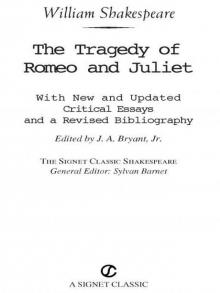 Romeo and Juliet
Romeo and Juliet As You Like It (Folger Shakespeare Library)
As You Like It (Folger Shakespeare Library)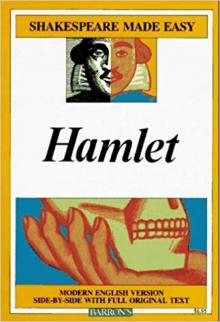 Hamlet
Hamlet Richard II (Folger Shakespeare Library)
Richard II (Folger Shakespeare Library)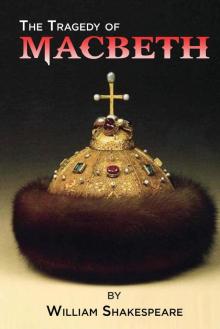 Macbeth
Macbeth Henry V
Henry V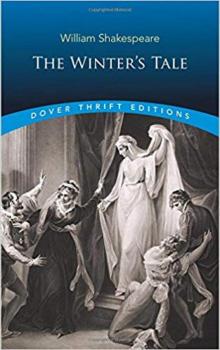 The Winter's Tale
The Winter's Tale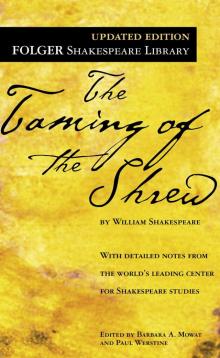 The Taming of the Shrew
The Taming of the Shrew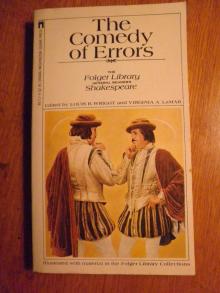 The Comedy of Errors
The Comedy of Errors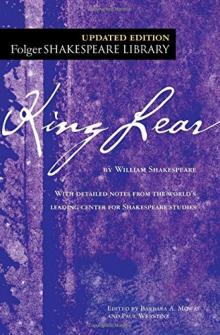 King Lear (Folger Shakespeare Library)
King Lear (Folger Shakespeare Library)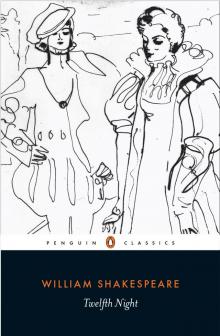 Twelfth Night
Twelfth Night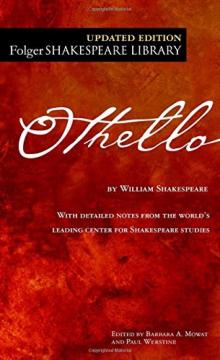 Othello
Othello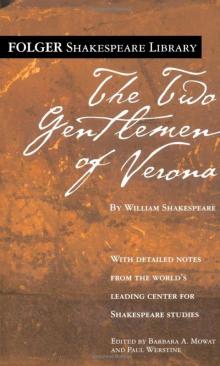 The Two Gentlemen of Verona
The Two Gentlemen of Verona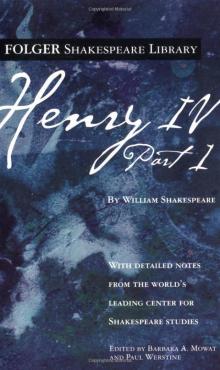 Henry IV, Part 1 (Folger Shakespeare Library)
Henry IV, Part 1 (Folger Shakespeare Library) King John/Henry VIII (Signet Classics)
King John/Henry VIII (Signet Classics)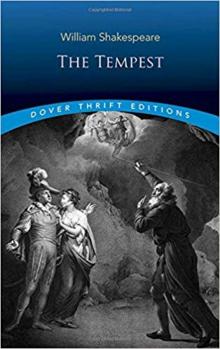 The Tempest
The Tempest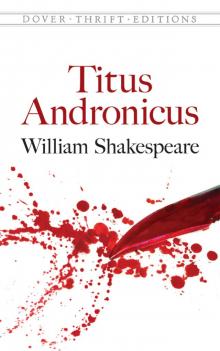 Titus Andronicus (Dover Publications)
Titus Andronicus (Dover Publications)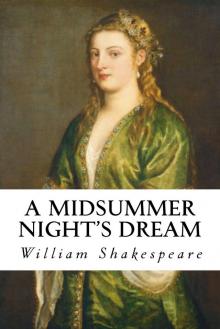 A Midsummer Night's Dream
A Midsummer Night's Dream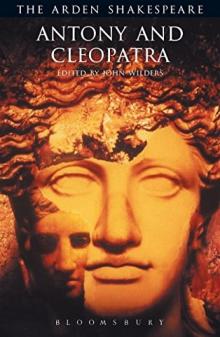 Antony and Cleopatra (Arden Shakespeare: Third Series)
Antony and Cleopatra (Arden Shakespeare: Third Series)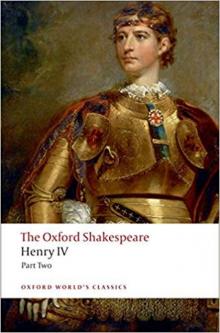 The Oxford Shakespeare: Henry IV, Part 2 (Oxford World's Classics)
The Oxford Shakespeare: Henry IV, Part 2 (Oxford World's Classics)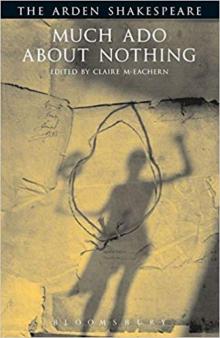 Much Ado About Nothing (Arden Shakespeare: Third Series)
Much Ado About Nothing (Arden Shakespeare: Third Series)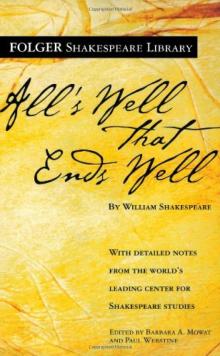 All's Well That Ends Well
All's Well That Ends Well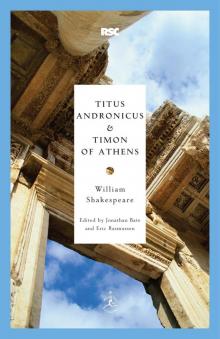 Titus Andronicus & Timon of Athens
Titus Andronicus & Timon of Athens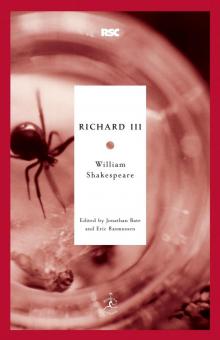 Richard III (Modern Library Classics)
Richard III (Modern Library Classics) Coriolanus
Coriolanus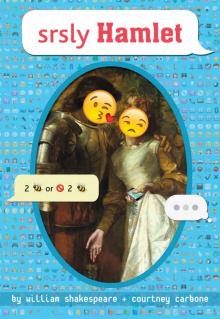 srsly Hamlet (OMG Shakespeare)
srsly Hamlet (OMG Shakespeare) The Merchant of Venice
The Merchant of Venice Richard III
Richard III Richard II
Richard II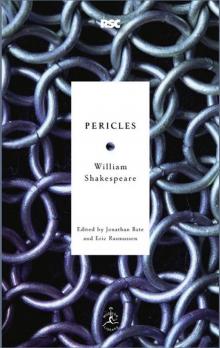 Pericles
Pericles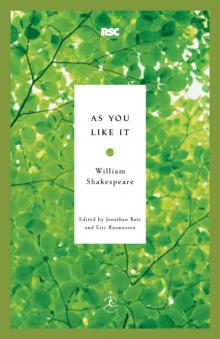 As You Like It
As You Like It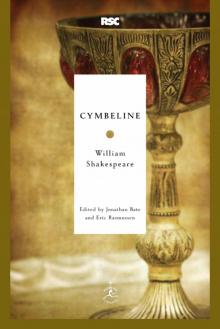 Cymbeline
Cymbeline Alls Wel that ends Well
Alls Wel that ends Well YOLO Juliet
YOLO Juliet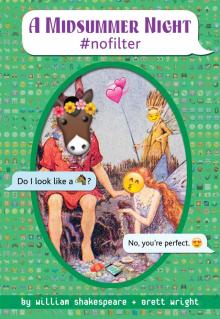 A Midsummer Night #nofilter
A Midsummer Night #nofilter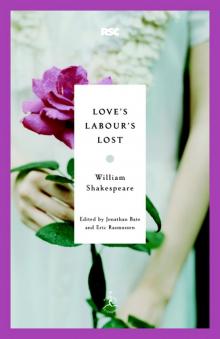 Love's Labour's Lost
Love's Labour's Lost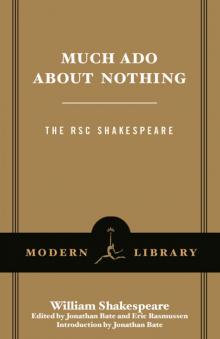 Much Ado About Nothing
Much Ado About Nothing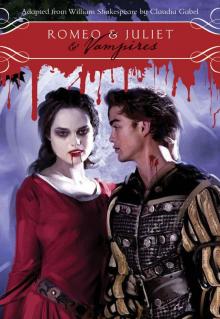 Romeo & Juliet & Vampires
Romeo & Juliet & Vampires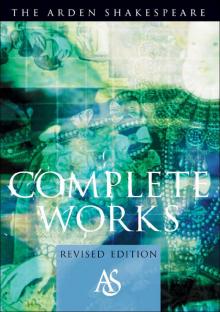 The Arden Shakespeare Complete Works
The Arden Shakespeare Complete Works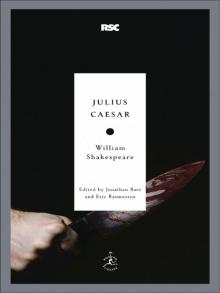 Julius Caesar
Julius Caesar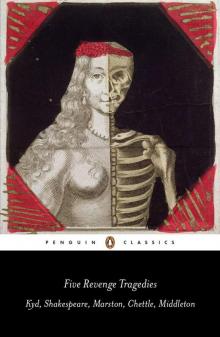 Five Revenge Tragedies: The Spanish Tragedy, Hamlet, Antonio's Revenge, The Tragedy of Hoffman, The Revenger's Tragedy (Penguin Classics)
Five Revenge Tragedies: The Spanish Tragedy, Hamlet, Antonio's Revenge, The Tragedy of Hoffman, The Revenger's Tragedy (Penguin Classics)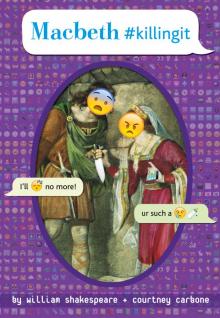 Macbeth #killingit
Macbeth #killingit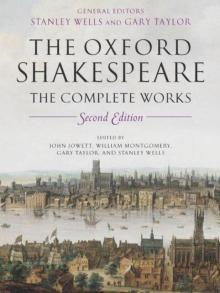 The Oxford Shakespeare: The Complete Works
The Oxford Shakespeare: The Complete Works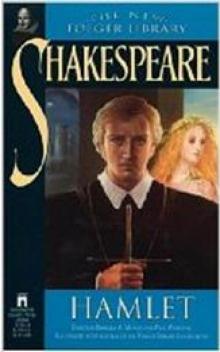 Hamlet, Prince of Denmark (Collins edition)
Hamlet, Prince of Denmark (Collins edition)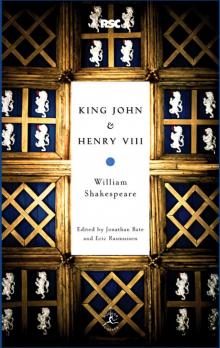 King John & Henry VIII
King John & Henry VIII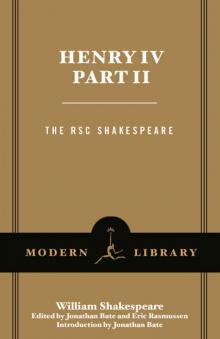 Henry IV, Part 2
Henry IV, Part 2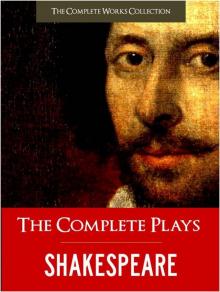 Complete Plays, The
Complete Plays, The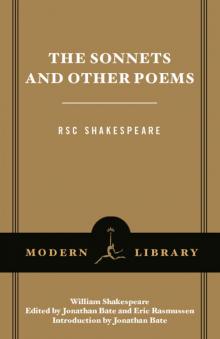 The Sonnets and Other Poems
The Sonnets and Other Poems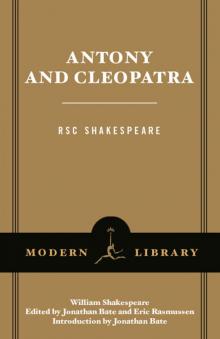 Antony and Cleopatra
Antony and Cleopatra Henry IV, Part 1
Henry IV, Part 1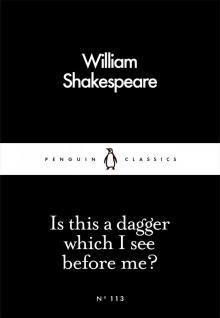 Is This a Dagger Which I See Before Me?
Is This a Dagger Which I See Before Me? The Complete Works of William Shakespeare In Plain and Simple English (Translated)
The Complete Works of William Shakespeare In Plain and Simple English (Translated)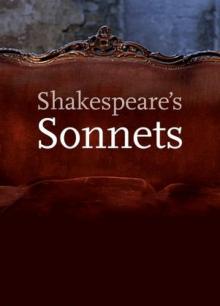 The Sonnets
The Sonnets